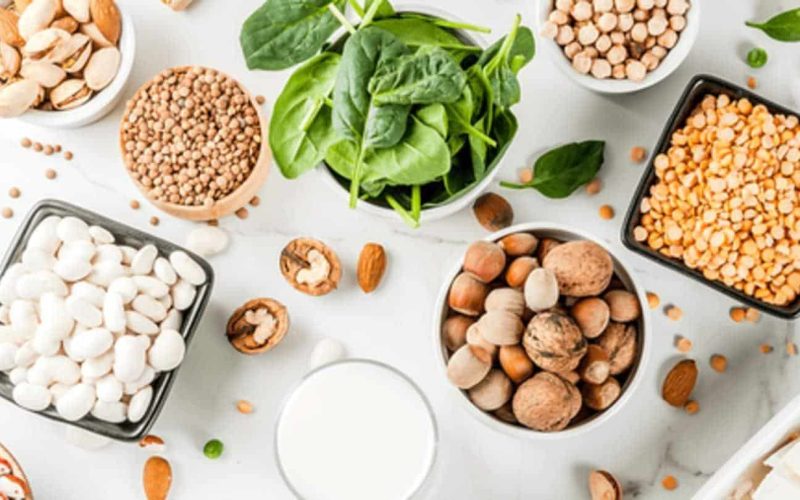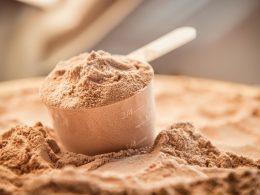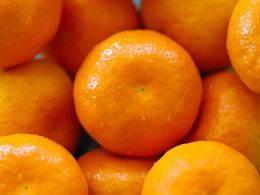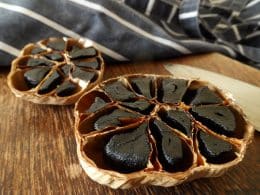The Vegan lifestyle has become one of the healthiest choices people make in recent times. Many people have considered adopting this way of life, but a major problem they probably consider is protein intake.
Let us find out the most popular vegan protein sources.
1. Seitan
Seitan is probably not a very familiar food to meat-eaters, but it is a popular source of protein for many vegans and vegetarians.
It is made from gluten, which is the major protein in wheat. Unlike other soy-based mock meats, it copies the look and texture of actual beef when cooked.
Also called wheat meat or wheat gluten, Seitan contains around 25 grams of protein for every 3.5 ounces (100 grams). This is precisely what makes it the most nutritious plant protein source here.
Seitan is also a fantastic source of selenium and packs small amounts of phosphorus, iron, and calcium.
If you want to find this meat alternative, all you have to do is search in the refrigerated section of many health food stores.
Seitan is quite versatile and can be grilled, pan-fried, and even sautéed. Therefore, you can easily incorporate it into a variety of healthy recipes.
However, people with gluten sensitivity or celiac diseases must avoid Seitan. Still, it is one of the most popular vegan protein sources
Key points: Seitan is a healthy mock meat that is made from wheat gluten. It has high protein content, a meat-like texture, and is highly versatile, which makes it a popular plant-based protein option among several vegetarians and vegans.
2. Tofu, Tempeh and Edamame
Tofu, tempeh, and edamame are all vegan protein sources that originate from soybeans.
Soybeans are considered a good source of protein. What this means is that they offer all the essential amino acids that the body needs.
Edamame is immature soybeans with a slightly grassy and sweet taste. They must be boiled or steamed before consumption and make a great side dish on their own or added to salads and soups.
Tofu is likely the most popular of the three protein sources here, and it is made from soybean curds nicely pressed together in a process that is a lot like cheesemaking.
Tempeh is also very delicious and is made by boiling and slightly fermenting mature soybeans before they are pressed into a patty.
Tofu does not come with have much natural taste but can easily absorb the flavor of whatever ingredients it is prepared with. Comparatively, tempeh is a little more delicious because it comes with a characteristic nutty flavor.
Both tempeh and tofu can be used in a wide range of recipes, starting from soups to burgers and chilis.
All three protein sources contain iron, calcium, and 10-19 grams of protein for every 3.5 ounces (100 grams).
Edamame has also been found to be rich in fiber, folate, and vitamin K. Tempeh has the right amount of B vitamins, probiotics, and minerals like magnesium and phosphorus.
Key points: Tempeh, tofu, and edamame all come from soybeans, a full source of protein. They are also packed with reasonable amounts of different nutrients and can be included in a variety of recipes.
3. Lentils
At 18 grams of protein for every cooked cup (240 ml), we can easily say that lentils are a good source of protein.
They can also be used in a vast option of dishes, ranging from spice-infused dahls to fresh salads and hearty soups.
Lentils also have great amounts of slowly digested carbs, and you can get as much as approximately 50% of your recommended daily from a single cup (240 ml).
Furthermore, the kind of fiber that is found in lentils is good for the good bacteria in your colon. Lentils may also assist with the reduction of the risk of diabetes, heart disease, excess body weight, and certain types of cancer.
In addition, lentils are wealthy in folate, iron, and manganese. They also contain a great number of antioxidants as well as other health-promoting plant compounds.
Key point: Lentils are nutritional powerhouses. They contain a lot of protein and healthy amounts of other nutrients. This plant may also go a long way to reduce the risk of several diseases.
4. Chickpeas and Many Varieties of Beans
Kidney, black, kidney and other types of beans come with a significant number of proteins for every serving.
Chickpeas, also called garbanzo beans, are one other wonderful legume with huge protein content.
Both chickpeas and beans come with 15 grams of protein for every cooked cup. Beans are also a fantastic source of fiber, complex carbs, iron, phosphorus, manganese, potassium, and many other plant compounds that are beneficial to human health.
Moreover, many studies have shown that a diet that is rich in beans and many other legumes can learn cholesterol, lower blood pressure, help control blood sugar levels, and even lessen belly fat.
Key point: Beans may not be everyone’s favorite, but they are health-promoting, and protein-packed legumes that have a variety of minerals, vitamins, and beneficial plant compounds.
5. Nutritional Yeast
Nutritional yeast is not exactly popular. It is a deactivated strain of Saccharomyces cerevisiae yeast, which is commercially sold as flakes or yellow powder.
It comes with a cheesy flavor, which is what makes it a famous ingredient in food like scrambled tofu and mashed potatoes.
Key point: Nutritional yeast is a healthy plant-based ingredient that is often used to provide dishes with a dairy-free cheese flavor. It is also high in fiber, protein, and is usually fortified with different nutrients, such as vitamin B12.
6. Spelt and Teff
Spelt and teff are part of a category called ancient grains. Certain ancient grains, such as farro, einkorn, sorghum, and barley.
Spelt is a kind of wheat and carries gluten, whereas teff comes from an annual grass, which can only mean that it is gluten-free.
Spelt and teff offer 10–11 grams of healthy protein for every cooked cup (240 ml), making them have higher protein content than other ancient grains.
Both are amazing sources of different nutrients, including fiber, complex carbs, iron, phosphorus, magnesium, and manganese. They also have reasonable amounts of zinc, B vitamins, and selenium.
Spelt and teff are one of the most versatile alternatives to common grains, like wheat and rice, and may be used in several recipes like baked goods, polenta, and risotto.
Key point: Spelt and teff are very good high-protein ancient grains. Spelt and teff are an amazing source of different vitamins and minerals and a good alternative to more popular grains.
7. Hempseed
Hempseed may not be one type of seeds you stock in your kitchen, but it is healthy. Hempseed is gotten from the Cannabis sativa plant, which is a member of the same family as the marijuana plant.
However, hempseed comes with only tiny amounts of THC, which is the compound that is responsible for producing the marijuana-like drug effects.
Although not as popular as other edible seeds, hempseed contains comes with 10 grams of whole, easily digestible protein for every ounce (28 grams). That is 50% more than flax seeds and chia seeds.
Hempseed also comes with a good amount of iron, iron, magnesium, zinc, calcium, and selenium. What else, it’s a wonderful source of omega-3 and omega-6 fatty acids in healthy amounts.
Interestingly, certain studies have indicated that the kind of fats that are found in hempseed may help with reducing inflammation, as well as reducing symptoms of menopause, PMS, and certain skin diseases.
You can sprinkle some hempseed in your smoothie or homemade salad dressings.
Key point: Hempseed comes with the right amount of full, highly-digestible protein, together with health-promoting essential fatty acids in a healthy ratio for optimal human health.
8. Green Peas
The small green peas that are often served on the side contain 9 grams of protein for every cooked cup (240 ml), which is a little more than one cup of milk.
A single serving of green peas comes with more than 25% of the daily required amount of fiber, vitamin K, vitamin C, vitamin A, folate, thiamine, and manganese.
Green peas have also been found to be a wonderful source of magnesium, iron, phosphorus, copper, zinc, and a good amount of b-vitamin. You can add the green beans to recipes such as basil and pea stuffed ravioli, pea and avocado guacamole, and Thai-inspired PC.
Key point: Green peas are very high in vitamins, protein, and minerals.
9. Spirulina
Spirulina is a blue-green algae that has been discovered to be in a nutritional powerhouse.
With two tablespoons full of Spirulina, you can get 8 grams of complete protein, as well as cover 22% of your daily iron, and thiamine requirements.
You also get to benefit 42% of your daily requirements for copper consumption. Spirulina comes with a good amount of riboflavin, magnesium, potassium, manganese, and a tiny amount of other nutrients that your body requires, including essential fatty acids.
Spirulina contains a natural pigment called Phycocyanin. This natural pigment appears to possess potent anti-inflammatory, antioxidant, and anti-cancer properties.
Furthermore, several researchers have linked consuming Spirulina to fantastic health benefits starting from reduced blood pressure, stronger immune system, improved blood sugar, and cholesterol levels.
Key point: Spirulina is a very nutritious high-protein algae with many health benefits.
10. Amaranth and Quinoa
Quinoa and amaranth are usually called the ancient gluten-free grains, but they are quite different because they do not grow from grass is like many other cereal grains that we know.
This is the reason why they are technically referred to as pseudocereals. Nonetheless, you can prepare them or ground them into flowers just like you do with common grains.
Quinoa and amaranth provide up to 9 grams of protein for every crooked cup. They are a very good source of protein, and that is rare among pseudocereals and grains.
Also, quinoa and amaranth are good sources of fiber, complex carbs, magnesium, iron, manganese, and phosphorus.
Key points: Amaranth and quinoa are not the same as other cereals, so they are called pseudocereals that offer you with a full source of protein.
11. Ezekiel Bread and Other Bread that is made From Sprouted Grains
Ezekiel bread is created from organic, sprouted legumes, and whole grains. These include barley, wheat, millet, and spelt, as well as lentils and soybeans.
Two slices of Ezekiel bread comes with almost 8 grams of protein, which is a little more than the average bread. Legumes and sprouting grains increase the number of good nutrients they possess and lessen the number of anti-nutrients in this bread.
In addition, research shows that sprouting ups their content of amino acid. Lysine is the reducing amino acid in several plants, and sprouting raises the lysine content. This goes a long way to helps boost the entire protein quality.
Similarly, a combination of legumes and grains could go a long way to improve the bread acid profile. It has also been found that sprouting increases the bread’s vitamin C, soluble fiber, folate, vitamin E, as well as beta-carotene content.
Ezekiel bread may also contain less gluten, which can promote digestion in people who are gluten sensitive.
Key point: Ezekiel and any other bread that is made from sprouted grains and has an impressive nutrient profile.
12. Soy Milk
Milk that is derived from soybeans and fortified with vitamins and minerals make a wonderful alternative to cow’s milk.
It not only comes with 7 grams of protein for every 240ml, but it also contains an extraordinary amount of vitamin D, calcium, and vitamin B12.
However, always remember that soy milk and soybeans do not have vitamin B12 naturally, so whenever you see vitamin B12 written on the container or pack of store-bought soy products, you should know it is fortified.
Soya milk can easily be purchased from most supermarkets. Another fantastic thing about soya milk is that it is highly versatile and can be used for baking, cooking, and so much more.
It also comes in sweetened and unsweetened variety, so if you are thinking of keeping the sugars down, you can opt for the unsweetened variety.
Key point: Soy milk is a great high-protein plant alternative to animal milk. It is a highly versatile product that can be used in many different ways.
13. Oats and Oatmeal
Oats are a good, easy, and delicious way to include some protein to any diet.
What’s oatmeal as a very delicious and amazing protein alternative for vegetarians and vegans. One reason why it’s our wonderful is that they contain a good amount of zinc magnesium, folate, and phosphorus
Key points: Oats are a very nutritious food, but also a delicious and easy way to introduce plant protein into a vegetarian or vegan diet.
14. Wild Rice
Wild rice comes with approximately 1.5 times the amount of protein as many other types of long-grain rice, including basmati and brown rice.
One full cooked cup (240 ml) offers 7 grams of protein, plus a great amount of fiber, magnesium, manganese, B vitamins, copper, and phosphorus.
Key points: Wild rice is a very delicious, nutrient-rich source of protein. Those who focus on wild rice as a staple food must take precautions to lessen its arsenic content.
15. Chia Seeds
Chia seeds are gotten from the plant called Salvia hispanica, which is native to Guatemala and Mexico.
Chia seeds provide 6 grams of protein, as well as 13 grams of fiber for every 1.25 ounces. These tiny seeds come with an amazing amount of calcium, magnesium, iron, and selenium. They have also been found to be a fantastic source of Omega-3 fatty acids and many other beneficial compounds like antioxidants.
Chiang seeds are also incredibly versatile and have a bland taste. Because they can absorb water, they turn into a gel-like substance that can be added to smoothies, puddings, and other recipes.
Key points: Chia seeds are healthy and a very versatile source of plant protein.
16. Nuts, Nut Butters and Other Seeds
These are just about the most popular plant-based alternatives for protein. Nuts and seeds come with great nutritional profiles and contain protein, vitamins, minerals, and oils.
Key point: Nuts, butter, and seeds are an easy way to add vitamins, plant protein, and minerals to your diet.
These are some healthy plant-based sources of protein that vegans and vegetarians can take advantage of.
We hope that this article being helpful. Please leave a comment below








